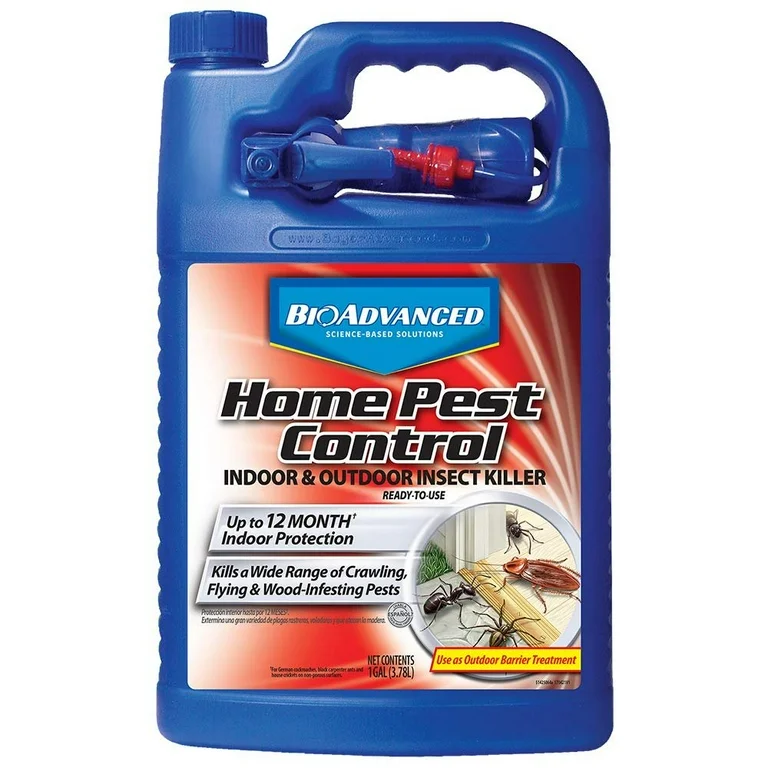A1 Charlotte Pest Control Companies - Your Neighborhood Pest Professionals
A1 Charlotte Pest Control Companies - Your Neighborhood Pest Professionals
Blog Article
Bed Insect Therapy Breakdown: Comparing Chemical Vs. Non-Chemical Solutions
In the world of bug control, specifically when handling the relentless issue of bed pests, the choice between chemical and non-chemical therapy solutions can be an essential one. Both strategies provide distinctive benefits and disadvantages, affecting factors such as performance, safety considerations, and overall expense. By examining the nuanced details of each technique, a more clear understanding of which course to pursue in attending to a bed pest problem can be attained.
Efficiency of Chemical Therapies
Chemical therapies for bed insect infestations have actually been extensively acknowledged for their fast and potent efficacy in eliminating these pests. When taking into consideration the performance of chemical therapies, it is vital to comprehend that they can provide a fast and thorough solution to a bed insect trouble.
Moreover, chemical therapies have the advantage of supplying residual results, meaning that they can remain to get rid of bed insects also after the initial application. This recurring action is specifically helpful in combating any potential re-infestations. Additionally, the rapid action of chemical therapies can bring relief to people facing serious bed pest problems, allowing them to gain back control of their living rooms rapidly.
Security Interest In Chemical Solutions
When using chemical solutions for bed bug treatment is guaranteeing the safety of residents and the setting,One important element that requires cautious factor to consider. While chemical treatments can be efficient in eradicating bed insects, they might pose risks if not managed effectively. Among the key safety and security interest in chemical remedies is the possible harm they can create to human health. Direct exposure to particular chemicals used in bed bug treatments can bring about respiratory system issues, skin irritation, or other damaging responses, particularly in individuals with pre-existing problems or sensitivities. Additionally, incorrect application or dose of chemical pesticides can result in poisonous residues lingering in the treated location, positioning long-term health and wellness dangers to passengers.
Moreover, the ecological effect of chemical remedies is one more significant factor to consider. Some pesticides used in bed insect treatments might be harmful to valuable insects, wild animals, and communities if they leach into the soil or water supply. It is important to utilize chemical treatments sensibly, complying with safety and security guidelines, and thinking about much less toxic options to minimize these risks and ensure the efficient and secure management of bed bug invasions.
Benefits of Non-Chemical Strategies
Thinking about the possible security issues and ecological effect associated with chemical solutions for bed pest treatment, discovering non-chemical methods provides an appealing choice with numerous distinctive benefits. Non-chemical therapies are eco friendly, as they do not add to air or water contamination, making them a sustainable selection for insect control.
Furthermore, non-chemical remedies can be effective in targeting bed insects, consisting of hard-to-reach areas where chemical treatments might not penetrate - A1 bed bug exterminator charlotte. Techniques such as heat treatment, vacuuming, heavy steam cleaning, and bed mattress coverings provide comprehensive obliteration without the usage of harmful chemicals.
Limitations of Non-Chemical Treatments

Furthermore, non-chemical therapies frequently need multiple applications to accomplish effective removal. This can be taxing and might not always ensure full elimination of all bed insects and their eggs, specifically in concealed or hard-to-reach locations.
Moreover, the success of non-chemical therapies greatly depends on appropriate execution and thoroughness, which can be testing great site for people without specialist knowledge. Poor application of non-chemical approaches may result in incomplete obliteration, you could look here resulting in consistent infestations and the requirement for added treatments.
Consequently, while non-chemical therapies have their advantages, it is vital to recognize these limitations and consider them when figuring out one of the most efficient approach for handling bed bug invasions.
Price Contrast: Chemical Vs. Non-Chemical Options
Offered the constraints associated with non-chemical treatments, an important facet to examine in the context of bed bug administration is the cost contrast between chemical and non-chemical options. In contrast, non-chemical treatments like heat therapy or steam can be a lot more expensive, with expenses ranging from $1,000 to $6,000 for a whole home. While the preliminary cost of chemical treatments might appear lower, several therapies may be called for to totally remove the invasion, possibly raising the total expense.
Conclusion

Thinking about the possible security problems and environmental influence linked with chemical services for bed pest therapy, discovering non-chemical methods provides a promising option with several distinctive benefits.Provided the constraints associated with non-chemical therapies, a necessary aspect to evaluate in the context of bed bug monitoring is the cost contrast in between chemical and non-chemical options. In contrast, non-chemical treatments like warmth treatment or vapor can be more costly, with costs ranging from $1,000 to $6,000 for original site an entire home. While the first cost of chemical treatments may seem lower, several therapies might be called for to totally eliminate the invasion, potentially boosting the total price.In conclusion, when comparing chemical and non-chemical bed bug treatment choices, it is vital to think about performance, safety and security, advantages, restrictions, and price.
Report this page